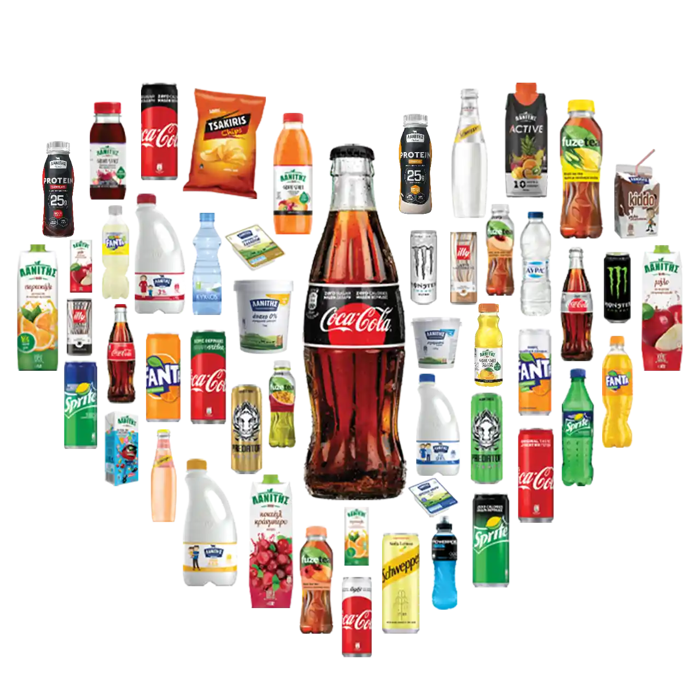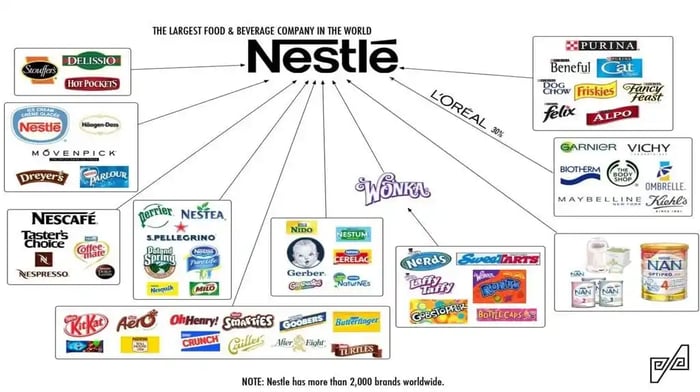Firms generally create, expand, and maintain brand portfolios to gain footholds in multiple markets and appeal to a wider variety of prospects. This trend has a presence in virtually every industry. For the sake of example, let's imagine a firm that runs a single fast-food chain.
That flagship brand serves typical fast-food fare at bargain prices. That chain is doing well, but executives at the firm are noticing a significant shift in consumer preferences. Now, a solid segment of the chain's market is starting to err towards healthier options.
The flagship brand's identity has been firmly established as a value-oriented albeit not-so-healthy franchise — so much so that making its menu healthier might alienate the majority of its customers who aren't interested in health-food.
In this case, the firm could explore the possibility of creating a new restaurant — one with an emphasis on healthy options. If it decides to take that route, it would add another brand to its brand portfolio.
The brands contained within your average brand portfolio tend to fall into four main roles: flanker brands, cash cow brands, low-end entry-level brands, and high-end prestige brands. Each category serves a purpose, and in many cases, a firm will create and maintain brands that fulfill different roles to complement one another.
1. Flanker Brand
A flanker brand is a brand a company releases in a product category in which it already has an existing brand. The hope is that the new brand helps increase the company's market share within that product category and serves the needs of prospects the original brand might not cover.
For instance, alcoholic beverage company Molson Coors leverages a flanker brand strategy in its approach to the low-calorie beer market. The company has released multiple brands — including Miller Lite, Coors Light, and Keystone Light — that all occupy a similar niche.
Still, the brands are distinct enough to appeal to different consumers and suit different situations. Even though they're technically competing, flanker brands complement more than they cannibalize. They're designed to help a company flesh out its market presence and crowd out competitors.
2. Cash Cow Brand
A cash cow brand is one that has reached a certain level of maturity with respect to its market presence and ability to make money. These brands can generate enough profit to essentially sustain themselves — keeping themselves afloat after businesses recoup their initial investments from them.
It's much less expensive to sit back and let these brands continue to bring in cash than to launch any sort of new product to replace them. As a result, they're rarely removed from the market.
3. Low-End Entry-Level Brand
A low-end entry-level brand is one that's added to a brand portfolio to be offered at a lower price than the other products or services that portfolio covers. The principle behind low-end entry-level brands has to do with hooking customers.
The idea is that consumers will buy the low-end entry-level brand initially — effectively introducing them to that brand's broader portfolio. Once a customer has engaged with and been impressed by the company behind the low-end entry-level brand, they'll be inclined to explore the broader suite of products in its portfolio.
4. High-End Prestige Brand
High-end prestige brands are ones designed to create the impression of premium quality and luxury. The hope is that some of the esteem the brand creates will trickle down onto the other brands within the company's broader portfolio.
These kinds of brands are tailored to lead consumers to think, "If this company can create a product of its caliber, maybe its other ones are high quality in their own right."
1. Coca Cola

Coca Cola's brand portfolio is about as eclectic, far-reaching as they come — certainly when it comes to the food and beverage industry. Its suite of brands includes drinks and edible products that cover a massive range of purposes, prices, qualities, and regional markets.
2. Nestle

Nestle is the largest food and beverage company in the world, and the graphic above barely scrapes the surface of its scale. Its brand portfolio is eclectic and contains brands that suit a massive variety of categories and needs.
3. General Electric

GE's brand portfolio is monolithic, meaning all the brands that fall under its broader portfolio are similarly branded. They all feature fundamentally similar names and sport the same logo.
4. Johnson and Johnson

Image Source: Johnson and Johnson
Johnson and Johnson's brand portfolio covers a variety of markets that fit under the broader healthcare industry umbrella.
Major brands generally don't exist in a vacuum. Almost all of them are a part of a broader brand portfolio, so virtually every brand has a firm, company, or conglomerate at the top of its lineage.
That's important to bear in mind when taking actions like trying to be ethical with your dollar. Any brand you use starts somewhere. If you can navigate that product's portfolio back to a company whose values and actions don't sit well with you, you'll know to avoid it.
Brand Management
.png?width=112&height=112&name=Image%20Hackathon%20%E2%80%93%20Vertical%20(80).png)




